
–– The newsletter on wine and wine travel ––
–– Read by wine lovers and wine professionals all over the world ––
–– On the internet since 1996 ––
“Noble grapes”, isn’t that an obsolete term?
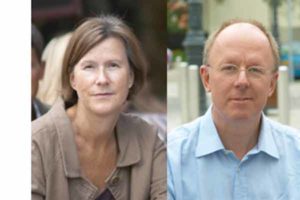 The wine world loves hierarchies. But despite this fact, isn’t it time to scrap the term “noble grape”? In Alsace, it’s been around for ages, but it’s a glaring anachronism. You can make an Alsace grand cru (with one exception) only from four so-called noble grapes. Doesn’t this feel a little outdated?
The wine world loves hierarchies. But despite this fact, isn’t it time to scrap the term “noble grape”? In Alsace, it’s been around for ages, but it’s a glaring anachronism. You can make an Alsace grand cru (with one exception) only from four so-called noble grapes. Doesn’t this feel a little outdated?
See what has happened in Languedoc. Carignan has been brushed aside on its home turf by the newcomers syrah and mourvèdre. The vast majority of appellations in the Languedoc allow carignan only up to 50%. In contrast, syrah and mourvèdre can approach 100% without any problems.
And yet carignan, like no other grape, can embody Languedoc’s particular terroir. Winemakers sing its praises. Instead, in a couple of decades, syrah has gone from almost zero presence to becoming Languedoc’s most planted grape.
If you want to know how it feels to have been in the shadow of a nobler relative all your life, ask aligoté in Burgundy. It is suitable only for charcuterie and to drink as kir (blended with a sweet black-currant liqueur). So it says in all textbooks about wine. And thus, everybody knows it from the time they start taking an interest in wine. But if all the best vineyards are dedicated to chardonnay, you may never get a chance to excel and shine.
Skilled winemaker Jean Gardiés at Domaine Gardiés in Roussillon told us when we visited that “no grape varieties are bad if they are planted in the right soil”. That is not given to all grapes—especially not those who live with prima donnas.
Take pinot meunier in Champagne, a grape that has had to endure a lot, not least humid and cool plots in Vallée de la Marne where the nobler pinot noir and chardonnay fear to tread (or more correctly, cannot produce very well). Pinot meunier gives fruity champagnes, a bit simple and with little ageing potential. That’s what it says in the textbooks. In the past, you were not allowed to plant it in the so called grand cru villages. People already had their mind made up about pinot meunier before they started tasting champagne. It was condemned in advance.
In fact, it is just the opposite. Pinot meunier can give champagnes with character, depth and intensity that can stand shoulder to shoulder to the best blanc de blanc, or even tower above it.
Pinot meunier is not the only grape suffering because of its lovely fruit. Fruitiness has never been as noble a character as austerity and tannins. Gamay is an excellent example of that.
But fortunately, that is changing. The time of revenge for the non-noble grapes has come.
Look at barbera in Piedmont, easy to grow but only used as an everyday wine for ordinary people because the acidity was too sharp. The nobles drank nebbiolo. Until all of a sudden in the 1980s some producers start to pay attention to barbera. They took better care of it. And showed what it could do.
Interest in non-noble grapes is rising. Maybe it has to do with the new passion for old, local grape varieties. Carignan does well outside the appellation system. Beaujolais is a cult wine in the natural wine movement. 100% pinot meunier is starting to be sought-after champagne. The last word has not been said.
We can surely hope for an even more varied and exciting future when more and more “ugly ducklings” in the vineyards come into the limelight thanks to skilled winemakers worldwide. Petit verdot, maturana tinta, cinsault, timorasso, feteasca regala, tannat, savatiano, négrette, romorantin…
Can we agree on a New Year’s resolution for 2021? When you come across a grape variety that with which you are not familiar, buy a bottle and try it!
In this last BKWine Brief of 2020 (number 208!) we give you some extra holiday reading. In addition to the wine world news, we also have several articles to delve into over the weekends. You will find links to them all further down in the Brief.
If you want to understand better how barrel ageing works and what influence oak has on the wine, we have an article about it.
We tell you more about the viognier grape that rose like a phoenix in the wine world, about an exceptional tasting of Tuscan wines back to 1930, as well as tips about three exciting small producers from Piedmont, and a story about a vineyard in the Languedoc that also rose from the ashes with a new owner.
You find a whole lot of inspirational wines in this month’s “Uncorked” and a fascinating book review about the wine monopoly in Sweden. It may not sound so exciting, but the book “We should not have so much fun” shows that it is not so obvious why the monopoly exists.
Even if the uncertainty remains about what 2021 will look like, it seems to be going in the right direction. EU has given the go-ahead for the first vaccine, and the future US president has been vaccinated on television, and more.
So maybe we can gradually hope to return to a more normal life, where we can travel to the vineyards again. In any case, that is what we are planning for. We have tours scheduled for spring and autumn of 2021.
When it’s time to go on a wine tour again, we will be there to take you on even better vineyard visits than before. Travel with BKWine!
Enjoy the Brief!
Merry Christmas and a Happy New Year and a prosperous 2021.
Britt & Per
If you appreciate what we do, you can help us:Tell your friends about the Brief or send it to them.
Like us and follow us on social media:
What’s on at BKWine Tours
BKWine is also one of the world’s leading wine tour operators. Here’s what we currently have on our scheduled wine tour program:
- Bordeaux, April 21-25, 2021
- Champagne, May 19-23, 2021
- Champagne, September 23-27, 2021 (possible combination with Bordeaux)
- Bordeaux, September 27 – October 1, 2021 (possible combination with Champagne)
- Chile-Argentina, January 2022
- South Africa, February 2022
- New Zealand, March 2022
We also make custom designed wine tours.
We also make custom designed wine tours.
We’re different than most other wine tour operators. We are people who know wine inside out, who travel constantly in wine regions, who write award winning books about wine. Who do this out of passion. Our tours are different from others. More in wine tours: BKWineTours.com.
Read our booksWe have written several wine books, ten at the last count. Unfortunately, only one of them has been translated to English; the others are (so far) only available in Swedish. This is the one that is available in English: All our books are on wine, but on different subjects: wines of the Languedoc, wine growing and wine making, the wines of France, Tuscany, Bordeaux, Piedmont, Burgundy, Champagne. Several have won prestigious prizes and awards from Gourmand International, OIV and others. Read more on our wine books. |
News from the world of wineWhat’s been happening in the world of wine recently. |
Adopt a vine in Châteauneuf-du-Pape
|
Producers ready to plant new grape varieties in Bordeaux
Some of the grapes are very unusual. Liliorila is a crossing made in 1956 between chardonnay and baroque, a grape from Béarn. Arinarnoa is also a crossing from 1956, between cabernet sauvignon and tannat. Castets is a grape that probably originally comes from the Bordeaux region. All three have good resistance to fungal diseases. However, this does not mean that a claret can have six new grape varieties. It is an experiment that will be conducted over ten years and then evaluated. Only the two appellations mentioned above may plant the grapes and not on more than 5% of their surface. They may constitute a maximum of 10% of the blend and they cannot be mentioned on the label. Read more vitisphere Travel: Join us at BKWine on a wine tour to Bordeaux to discover all the magnificent wines. |
The prestigious South African property Plaisir de Merle changes hands
The new happy owner of Plaisir de Merle is the Jordaan family, who also owns the Bartinney Wine Estate in the Banhoek Valley in Stellenbosch. Distell for its part still owns Allesverloren, Nederburg and Durbanville Hills. Read more: thedrinksbusiness Travel: Join us at BKWine on a wine tour to South Africa to enjoy the beautiful landscape and outstanding wines. |
Corked wines, soon a thing of the past with new technology from Amorim
The Diam cork, made by a French company, is a guaranteed TCA-free cork that has been on the market for about ten years. But Diam is a technical cork. Amorim’s new technology applies to natural corks, the cork that many wine producers prefer to use. Read more winebusiness |
A vaccine also for vines, against the dreaded grapevine fanleaf virus
However, new solutions are getting closer. A kind of vaccine is one possibility. In 2021 and 2022, the French research institute l’Inrae will do trial “vaccinations” on rootstocks that are then planted on highly infected vineyards to evaluate its effectiveness. Another possibility is to develop a rootstock that is resistant to court-noué. In fact, one already exists, but its other properties are not good, so the researchers have a few years ahead of them trying out different crossings. (Source: La Vigne.) |
Meeting Pieter Ferreira, the bubbly guru in South Africa
Pieter Ferreira has been working with bubbles for 30 years, but he continually wants to improve. “Our R & D program is huge. We work with isolating yeast from our own vineyards. We do trials with crown cap instead of the traditional cork and have noted difference both in chemical analyses and in taste. We press pinot noir at very low pressure, 0.8 bar. Removing colour with carbon is standard procedure, but we don’t use it, we rather separate our pressings.” Read more on Graham Beck here: grahambeck.com. Maybe one wine in your glass during the holidays will be an MCC? You can read a longer interview with Pieter Ferreira on BKWine Magazine: A bubbly ride in South Africa – meet Pieter Ferreira at Graham Beck. Travel: Join us at BKWine on a wine tour to South Africa to enjoy the beautiful landscape and outstanding wines. |
FeaturesArticles and features published on BKWine Magazine and on our wine travel blog and photography blog in the last month. |
Tuscan wines ageing with grace over nine decades
Read more in Åsa’s article about the wines going back to 1930 on BKWine Magazine: Discover Carmignano wines with Villa di Capezzana 1930 to 2017. |
Viognier, from nearly extinct to popular in 30 years
Read more in Britt’s article on BKWine Magazine: Renaissance for viognier with two top producers in the northern Rhône. |
Uncorked: Good wines we have tasted recently, December 2020
This month: Top white wines from South Africa, an unusual gewurztraminer, exciting wines with a natural wine character, complexity from Roussillon, several cabernet franc wines that show how delicious this grape is, Moldova, Beaujolais, Béarn and a some more. On BKWine Magazine: Uncorked: Good wines we have tasted recently, December 2020. |
“We should not have so much fun” a riveting political story
Read more in CM Hedin’s book review on BKWine Magazine: On the book “We should not have so much fun – A story about Swedish alcohol policy” | book review. |
Longed-for producers meet thirsty throats on the Italian Wind Day at the Grand Hotel
Read more in Sven-Olof Johansson’s article on BKWine Magazine: Three small Italian producers from Trentino and Piedmont to go looking for. |
The Château de Figuières in La Clape, a Languedoc winery that is reinventing itself | Britt on Forbes
Read more in Britt’s article on BKWine Magazine: The Château de Figuières in La Clape, a Languedoc winery that is reinventing itself | Britt on Forbes. |
The secrets of oak – how barrel ageing affects the wine
Read more in Britt’s article on BKWine Magazine: The secrets of oak – how barrel ageing affects the wine. |
Wine ToursSome information on our current and future wine tours. Book a wine tour with the “world’s top wine tour operator” today (or when you feel like travelling to wine country). |
Champagne, France’s northernmost wine region, will give you the ultimate celebration | wine tour
Wine tour to Champagne, May 19-23 Wine tour to Champagne, September 23-27 We also offer this autumn tour in combination with the Bordeaux tour. It will be a magnificent 9-day tour of Champagne and Bordeaux, starting September 23 and ending October 1. More details will soon be available on our website. |
Bordeaux, the southern region that is not really part of the south | wine tour
Bordeaux is so famous that every wine lover must visit at least once. On our tour to this magnificent region, we go to the famous appellations Medoc, Saint Emilion and Graves. We stay in the beautiful city of Bordeaux. Maybe France’s most elegant. You will experience tastings at the chateaux, walks in the vineyards, and you will learn about the work and the effort that goes into every bottle. Our lunches will be prestigious meals at the chateaux with matching wines. Wine tour to Bordeaux, April 21-25 Wine tour to Bordeaux, September 27 – October 1 We also offer this autumn tour in combination with the Champagne tour. It will be a magnificent 9-day tour of Champagne and Bordeaux, starting September 23 and ending October 1. More details will soon be available on our website. |
New World wine tours in the winter months of 2022 to enjoy wine, gastronomy, spectacular scenery and sunshineThe destinations for the 2022 winter wine tours are Chile-Argentina, New Zealand and South Africa. In addition to being fascinating wine countries, they also have a spectacular nature and exciting gastronomy to discover such as empanadas, top quality meat, seafood, spicy Malay cuisine and more. If the world’s health situation goes in the right direction and the vaccines work as we hope, these three trips will be able to offer you wonderful experiences. An excellent opportunity to recharge the batteries with sun, warm weather and exceptional vinous experiences. If you are interested in any of these three tours, contact us with your questions. Chile and Argentina in January 2022
The programme for South America, Chile and Argentina 2022 is not entirely settled yet, but it will be similar to the South America wine trip 2021. South Africa in February 2022
The travel programme for South Africa 2022 is not entirely settled yet, but it will be similar to the South Africa wine trip 2021. New Zealand, March 10–25, 2022
The programme for New Zealand 2022 is not entirely settled yet, but it will be similar to the New Zealand wine trip 2021. Contact us if you have any questions or want more information! |


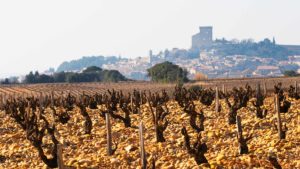 If you cannot buy a vineyard, maybe adoption of a vine can be a (slightly cheaper) alternative? The Mayard family has 43 hectares in Châteauneuf-du-Pape that are organically certified. You can now adopt some of their 100-year-old grenache vines used for the prestigious cuvée La Crau de Ma Mère. During the year you will get information about work in the vineyard and how your vines are doing. You can then visit Domaine Mayard and pick up six bottles with your name on the back label (or have the bottles sent to you). A last-minute Christmas present perhaps? For more information on how to adopt vines in Châteauneuf-du-Pape
If you cannot buy a vineyard, maybe adoption of a vine can be a (slightly cheaper) alternative? The Mayard family has 43 hectares in Châteauneuf-du-Pape that are organically certified. You can now adopt some of their 100-year-old grenache vines used for the prestigious cuvée La Crau de Ma Mère. During the year you will get information about work in the vineyard and how your vines are doing. You can then visit Domaine Mayard and pick up six bottles with your name on the back label (or have the bottles sent to you). A last-minute Christmas present perhaps? For more information on how to adopt vines in Châteauneuf-du-Pape 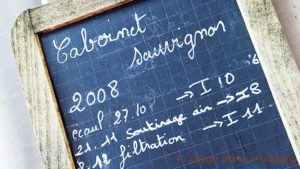 No, your Bordeaux wine will not soon be made from other grape varieties, as some headlines have implied. Last year, producers in Bordeaux approved a proposal to experiment with grape varieties that have never been grown in the region before. As a way to manage climate change, they decided to propose to allow the white petit manseng, alvarinho and liliorila and the red arinarnoa, castets, marselan and touriga nacional. Now, the INAO (Institut National de l’Origine et de la Qualité) has given their official approval and the producers in the Bordeaux and Bordeaux Supérieur appellations can start planting these grapes, except petit manseng which was not accepted by INAO.
No, your Bordeaux wine will not soon be made from other grape varieties, as some headlines have implied. Last year, producers in Bordeaux approved a proposal to experiment with grape varieties that have never been grown in the region before. As a way to manage climate change, they decided to propose to allow the white petit manseng, alvarinho and liliorila and the red arinarnoa, castets, marselan and touriga nacional. Now, the INAO (Institut National de l’Origine et de la Qualité) has given their official approval and the producers in the Bordeaux and Bordeaux Supérieur appellations can start planting these grapes, except petit manseng which was not accepted by INAO.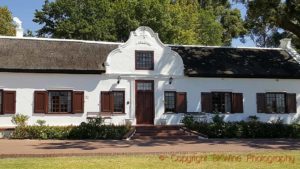 The huge South African producer Distell, with wine brands such as Pongracz, Two Oceans, Fleur du Cap and Neethlingshof, has sold one of its star properties, Plaisir de Merle in Paarl. We visited Plaisir de Merle a few years ago. It is a magnificent estate. The Manor House was built in 1764 and is dazzling white, has ornate gables and thatched roofs and is one of the earliest and finest examples of Cape Dutch architecture. Plaisir de Merle was founded by one of the French Huguenots who came to South Africa in the late 17th century and settled in Paarl. Charles Marais was one of the few who actually had winegrowing experience from France.
The huge South African producer Distell, with wine brands such as Pongracz, Two Oceans, Fleur du Cap and Neethlingshof, has sold one of its star properties, Plaisir de Merle in Paarl. We visited Plaisir de Merle a few years ago. It is a magnificent estate. The Manor House was built in 1764 and is dazzling white, has ornate gables and thatched roofs and is one of the earliest and finest examples of Cape Dutch architecture. Plaisir de Merle was founded by one of the French Huguenots who came to South Africa in the late 17th century and settled in Paarl. Charles Marais was one of the few who actually had winegrowing experience from France.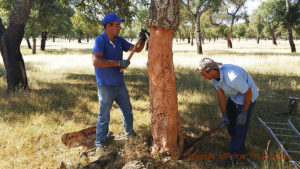 Amorim in Portugal is the world’s largest producer of wine cork stoppers. They sell 5.4 billion cork stoppers a year, both “natural” corks, which are extracted from a single cork strip, and “technical” corks, which are agglomerated corks from cork granules. Amorim has developed a new production process so that from now on they will be able to guarantee that all their corks are free from TCA, the molecule responsible for cork defects. Production should be in full swing by the beginning of 2021. The technical details have not yet been published as the process is being patented. Amorim already has a process called NDTech that guarantees TCA-free corks, but it is only used for the highest quality corks and comes with a higher price tag. This new process applies to all corks, at no extra cost.
Amorim in Portugal is the world’s largest producer of wine cork stoppers. They sell 5.4 billion cork stoppers a year, both “natural” corks, which are extracted from a single cork strip, and “technical” corks, which are agglomerated corks from cork granules. Amorim has developed a new production process so that from now on they will be able to guarantee that all their corks are free from TCA, the molecule responsible for cork defects. Production should be in full swing by the beginning of 2021. The technical details have not yet been published as the process is being patented. Amorim already has a process called NDTech that guarantees TCA-free corks, but it is only used for the highest quality corks and comes with a higher price tag. This new process applies to all corks, at no extra cost.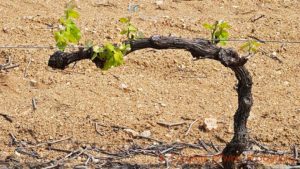 Vines are also affected by viruses. The most difficult one in France since several decades back is court-noué, which is also found in other countries. In English, it is called grapevine fanleaf virus. It is spread by nematodes (a kind of worm) in the soil. Champagne, Burgundy and Sancerre are among the regions hardest hit. But the disease is found in many more places around the world. Its effect is that quantity is reduced and sometimes also the quality of the grapes. There is no cure or way to fight it. The only thing you can do today is pull up the infected vineyards and let the soil lie dormant, preferably for seven years, the time it takes for the nematodes to disappear. It is a long time that in practice will be ten years or more before you can get grapes from that vineyard again.
Vines are also affected by viruses. The most difficult one in France since several decades back is court-noué, which is also found in other countries. In English, it is called grapevine fanleaf virus. It is spread by nematodes (a kind of worm) in the soil. Champagne, Burgundy and Sancerre are among the regions hardest hit. But the disease is found in many more places around the world. Its effect is that quantity is reduced and sometimes also the quality of the grapes. There is no cure or way to fight it. The only thing you can do today is pull up the infected vineyards and let the soil lie dormant, preferably for seven years, the time it takes for the nematodes to disappear. It is a long time that in practice will be ten years or more before you can get grapes from that vineyard again.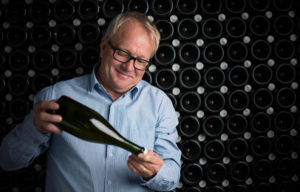 In South Africa, MCC, Méthode Cap Classic, is the fastest growing wine category, says Pieter Ferreira during a zoom conference. Pieter is South Africa’s guru of bubbly wine. He has been chief winemaker for 30 years (almost since the beginning) at Graham Beck, a Breede River Valley-based wine company, 10 kilometres from the town of Robertson. The grapes, chardonnay and pinot noir, come mainly from here. Robertson is an outstanding region thanks to the large temperature differences during night and day, says Pieter. “We have between 30 and 40 degrees C during the day, but the temperature drops to 15 C at night. Also, we have limestone in the soil. The base wines get a high acidity, perfect for sparkling wines.”
In South Africa, MCC, Méthode Cap Classic, is the fastest growing wine category, says Pieter Ferreira during a zoom conference. Pieter is South Africa’s guru of bubbly wine. He has been chief winemaker for 30 years (almost since the beginning) at Graham Beck, a Breede River Valley-based wine company, 10 kilometres from the town of Robertson. The grapes, chardonnay and pinot noir, come mainly from here. Robertson is an outstanding region thanks to the large temperature differences during night and day, says Pieter. “We have between 30 and 40 degrees C during the day, but the temperature drops to 15 C at night. Also, we have limestone in the soil. The base wines get a high acidity, perfect for sparkling wines.”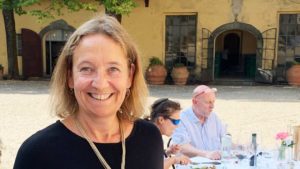 “Few wineries manage to walk through history without following trends or markets, with the only aim to focus on quality. One of them is Capezzana in the unknown (to most) wine region of Carmignano in Tuscany. In September Capezzana organised a tasting with their flagship wine, Villa di Capezzana, made with 80 per cent sangiovese and 20 per cent of cabernet sauvignon. The first vintage was 1925, long before anyone had ever heard of the today famous Super Tuscans.”
“Few wineries manage to walk through history without following trends or markets, with the only aim to focus on quality. One of them is Capezzana in the unknown (to most) wine region of Carmignano in Tuscany. In September Capezzana organised a tasting with their flagship wine, Villa di Capezzana, made with 80 per cent sangiovese and 20 per cent of cabernet sauvignon. The first vintage was 1925, long before anyone had ever heard of the today famous Super Tuscans.”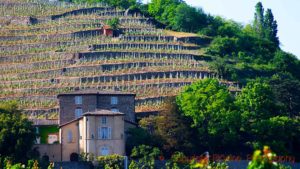 “Viognier has its “home” in the Rhône district, in the two small appellations Condrieu and Château Grillet. Until the end of the 20th century, it was hardly found anywhere else in France or any other wine country. Today that is no longer the case, which is good. It has become popular in single-variety wines and as a blended grape in Languedoc wines. It has also spread far beyond France’s borders, including Italy, the United States, Chile, Australia and South Africa.”
“Viognier has its “home” in the Rhône district, in the two small appellations Condrieu and Château Grillet. Until the end of the 20th century, it was hardly found anywhere else in France or any other wine country. Today that is no longer the case, which is good. It has become popular in single-variety wines and as a blended grape in Languedoc wines. It has also spread far beyond France’s borders, including Italy, the United States, Chile, Australia and South Africa.”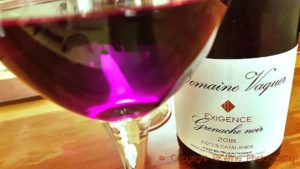 Uncorked: Under this heading, we collect various wines that we have tasted, and liked, recently. It can be wines that we have had during dinner at home, at wine tastings, press lunches, visits to vineyards, or other occasions. Some inspiration for more wine discoveries! As well as a perspective on what to expect from older wines.
Uncorked: Under this heading, we collect various wines that we have tasted, and liked, recently. It can be wines that we have had during dinner at home, at wine tastings, press lunches, visits to vineyards, or other occasions. Some inspiration for more wine discoveries! As well as a perspective on what to expect from older wines.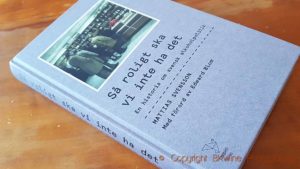 After reading Mattias’ book, you realize that alcohol policy is not just about public health, which can be easy to believe if you listen to politicians. There have been many other driving forces behind the absurd laws and regulations that have affected us Swedes. It is mainly economic motives, but also that politicians so want to control and decide over people’s freedom. The state always knows best, and it is best that the people comply with this! This has led to arbitrary laws, which at best, have made very little difference to public health and, at worst, have been directly counterproductive. When the priest was to negotiate with the peasants about the “tithe”, the occasional dram helped to increase the generosity. When the church complained about the increasing restaurant life, it was not primarily out of concern for the parish’s health, but rather because they did not want competition.
After reading Mattias’ book, you realize that alcohol policy is not just about public health, which can be easy to believe if you listen to politicians. There have been many other driving forces behind the absurd laws and regulations that have affected us Swedes. It is mainly economic motives, but also that politicians so want to control and decide over people’s freedom. The state always knows best, and it is best that the people comply with this! This has led to arbitrary laws, which at best, have made very little difference to public health and, at worst, have been directly counterproductive. When the priest was to negotiate with the peasants about the “tithe”, the occasional dram helped to increase the generosity. When the church complained about the increasing restaurant life, it was not primarily out of concern for the parish’s health, but rather because they did not want competition.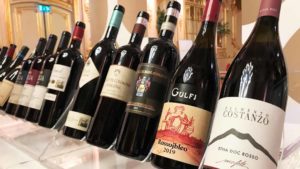 Sweden imported 205 million litres of wine in 2019. Italy is indisputably number one and represented 28% of the volume, followed by France’s 14%. If we add what is delivered via online retailers and which crosses the border in the boot of a car, it becomes considerable volumes. Unfortunately, the figures for 2020 will look completely different. No matter what taste and style you strive for, there is an Italian wine that fits the bill. Here are three producers that it’s worth looking for.
Sweden imported 205 million litres of wine in 2019. Italy is indisputably number one and represented 28% of the volume, followed by France’s 14%. If we add what is delivered via online retailers and which crosses the border in the boot of a car, it becomes considerable volumes. Unfortunately, the figures for 2020 will look completely different. No matter what taste and style you strive for, there is an Italian wine that fits the bill. Here are three producers that it’s worth looking for.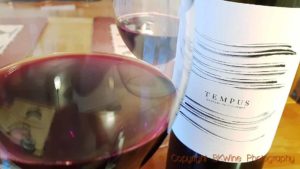 There are many beautiful wine regions in the Languedoc. La Clape, near the town of Narbonne, is one of them. Château de Figuières is situated at an altitude of 150 meters on the limestone plateau of La Clape. The sea is five kilometres away, close enough to cool the vines at night. In 1980, when Château de Figuières changed hands, there were no vines so the new owner started planting. Now, 40 years later, the winery is going through a transformation from top to bottom. The whole area around Château de Figuières is a protected nature reserve perfect to go for long nature walks. It is also one of France’s sunniest places. Here, wild orchids grow among olive trees, cypresses, honeysuckle and fragrant herbs, the Languedoc garrigue.
There are many beautiful wine regions in the Languedoc. La Clape, near the town of Narbonne, is one of them. Château de Figuières is situated at an altitude of 150 meters on the limestone plateau of La Clape. The sea is five kilometres away, close enough to cool the vines at night. In 1980, when Château de Figuières changed hands, there were no vines so the new owner started planting. Now, 40 years later, the winery is going through a transformation from top to bottom. The whole area around Château de Figuières is a protected nature reserve perfect to go for long nature walks. It is also one of France’s sunniest places. Here, wild orchids grow among olive trees, cypresses, honeysuckle and fragrant herbs, the Languedoc garrigue.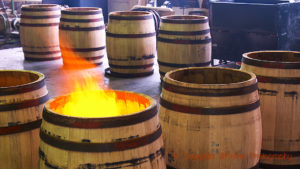 Oak barrel ageing is today important when it comes to a certain category of red and white wines in the upper echelons. If you talk about quality improvements in a wine district, oak ageing is often part of the discussion. How beneficial is the oak’s impact on the wine? Do all wines benefit from being aged in oak? And is oak ageing really a new phenomenon? No, wooden barrels have been around for almost as long as winemaking, as a way of storing and transporting the wine. But it is only since the end of the 20th century that people have been seriously interested in examining oak’s impact on wine in more detail. And it has proven to be a complex science, to say the least.
Oak barrel ageing is today important when it comes to a certain category of red and white wines in the upper echelons. If you talk about quality improvements in a wine district, oak ageing is often part of the discussion. How beneficial is the oak’s impact on the wine? Do all wines benefit from being aged in oak? And is oak ageing really a new phenomenon? No, wooden barrels have been around for almost as long as winemaking, as a way of storing and transporting the wine. But it is only since the end of the 20th century that people have been seriously interested in examining oak’s impact on wine in more detail. And it has proven to be a complex science, to say the least.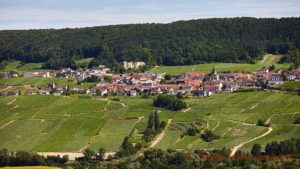 Champagne is France’s northernmost wine region. This is where you find the world’s most celebrated sparkling wine, as well as the wine for most celebrations. Racy, elegant wines but with a fantastic diversity, wines that also go very well with all sorts of food. But you need to know what kind of champagne you have to make the best matches. Do you like it brut, brut zero, sec or maybe demi-sec? Champagne producers have to follow many rules. One of the things that are highly regulated is the sugar content in the bottle. Fortunately, nowadays, most champagnes are dry, that is “brut”. This is the style that we personally prefer and the one that goes best with food. So called “dry” is actually a pretty sweet champagne but can be your choice if you are sensitive to high acidity. If you don’t know the champagne language, it can be confusing. But if you spend a few days here, you will learn it and a lot more about this enticing wine region. And you will taste beautiful champagnes, not least during our lunches. Join us for a luxurious experience.
Champagne is France’s northernmost wine region. This is where you find the world’s most celebrated sparkling wine, as well as the wine for most celebrations. Racy, elegant wines but with a fantastic diversity, wines that also go very well with all sorts of food. But you need to know what kind of champagne you have to make the best matches. Do you like it brut, brut zero, sec or maybe demi-sec? Champagne producers have to follow many rules. One of the things that are highly regulated is the sugar content in the bottle. Fortunately, nowadays, most champagnes are dry, that is “brut”. This is the style that we personally prefer and the one that goes best with food. So called “dry” is actually a pretty sweet champagne but can be your choice if you are sensitive to high acidity. If you don’t know the champagne language, it can be confusing. But if you spend a few days here, you will learn it and a lot more about this enticing wine region. And you will taste beautiful champagnes, not least during our lunches. Join us for a luxurious experience. Champagne is in the very north-east of France (we have it on our programme too). Bordeaux is almost diametrically opposed, both geographically and style-wise. Bordeaux is in the south-western part of France, quite close to the Spanish border. It is mainly-today almost exclusively-known for its red wines, as opposed to Champagne that is virtually white only.
Champagne is in the very north-east of France (we have it on our programme too). Bordeaux is almost diametrically opposed, both geographically and style-wise. Bordeaux is in the south-western part of France, quite close to the Spanish border. It is mainly-today almost exclusively-known for its red wines, as opposed to Champagne that is virtually white only.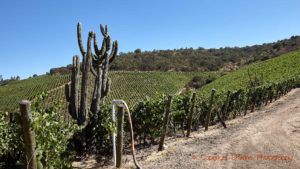 Argentina is a country with a long wine tradition. It is a New World country, but it feels partly like the old world. However, the vineyards and the steaks are larger. We start with two days in Buenos Aires, and then we fly west to Mendoza, the famous wine region where we are introduced to the versatile malbec. We enjoy instructive tastings and outdoor barbecue lunches. We take the bus across the mighty Andes to Chile. We start by the sea where it is relatively cool. We taste pinot noir and sauvignon blanc. We then continue to the warmer Colchagua where we will get to know, among other things, Chile’s own grape carmenère. We end our adventure in the capital Santiago de Chile.
Argentina is a country with a long wine tradition. It is a New World country, but it feels partly like the old world. However, the vineyards and the steaks are larger. We start with two days in Buenos Aires, and then we fly west to Mendoza, the famous wine region where we are introduced to the versatile malbec. We enjoy instructive tastings and outdoor barbecue lunches. We take the bus across the mighty Andes to Chile. We start by the sea where it is relatively cool. We taste pinot noir and sauvignon blanc. We then continue to the warmer Colchagua where we will get to know, among other things, Chile’s own grape carmenère. We end our adventure in the capital Santiago de Chile.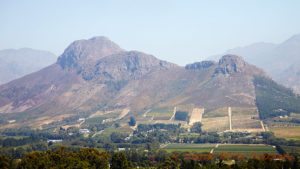 South Africa is a fantastic wine country to visit. It’s breathtakingly beautiful. The majestic mountains that surround the wine districts are continually changing colour depending on how the sun stands during the day. As experiences go, the wines are not far behind. A lot has happened since we started drinking South African in the 1990s. The Chenin blanc wines are sensational. That grape alone is a reason to go to South Africa. We meet in Cape Town and continue from there to Walker Bay on the south coast, we go up to Franschhoek and Swartland and end in Stellenbosch.
South Africa is a fantastic wine country to visit. It’s breathtakingly beautiful. The majestic mountains that surround the wine districts are continually changing colour depending on how the sun stands during the day. As experiences go, the wines are not far behind. A lot has happened since we started drinking South African in the 1990s. The Chenin blanc wines are sensational. That grape alone is a reason to go to South Africa. We meet in Cape Town and continue from there to Walker Bay on the south coast, we go up to Franschhoek and Swartland and end in Stellenbosch.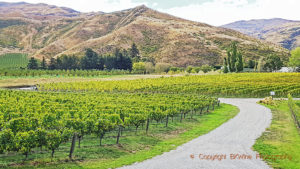 In 1984, a famous tasting was held in London when wine journalists tasted sauvignon blanc from New Zealand for the first time. Today, New Zealand is a small but highly respected wine country. And we find much more here than sauvignon blanc. We will taste cabernet sauvignon on Waiheke Island, pinot noir in Central Otago, syrah in Hawke’s Bay and riesling, pinot gris, merlot and many other grape varieties on our magnificent journey across (almost) the entire country.
In 1984, a famous tasting was held in London when wine journalists tasted sauvignon blanc from New Zealand for the first time. Today, New Zealand is a small but highly respected wine country. And we find much more here than sauvignon blanc. We will taste cabernet sauvignon on Waiheke Island, pinot noir in Central Otago, syrah in Hawke’s Bay and riesling, pinot gris, merlot and many other grape varieties on our magnificent journey across (almost) the entire country.




